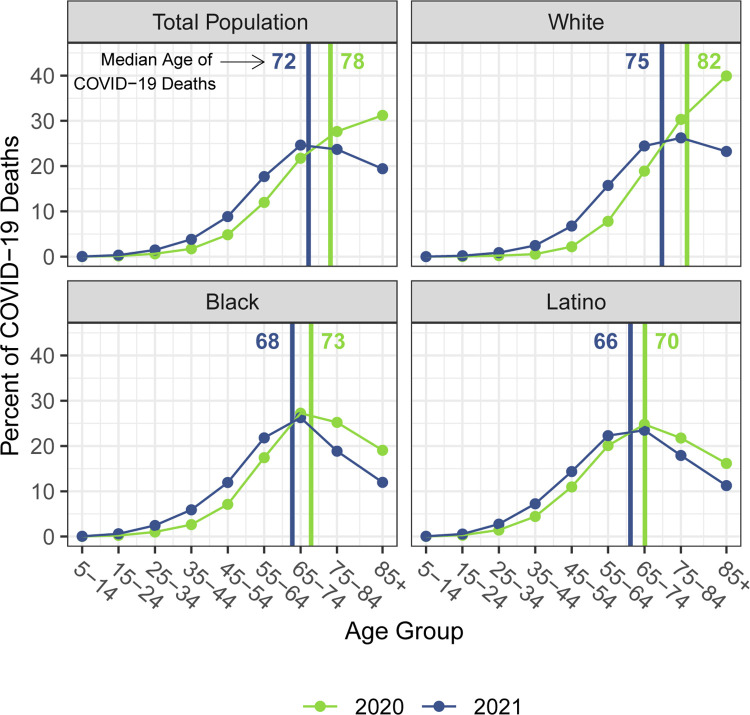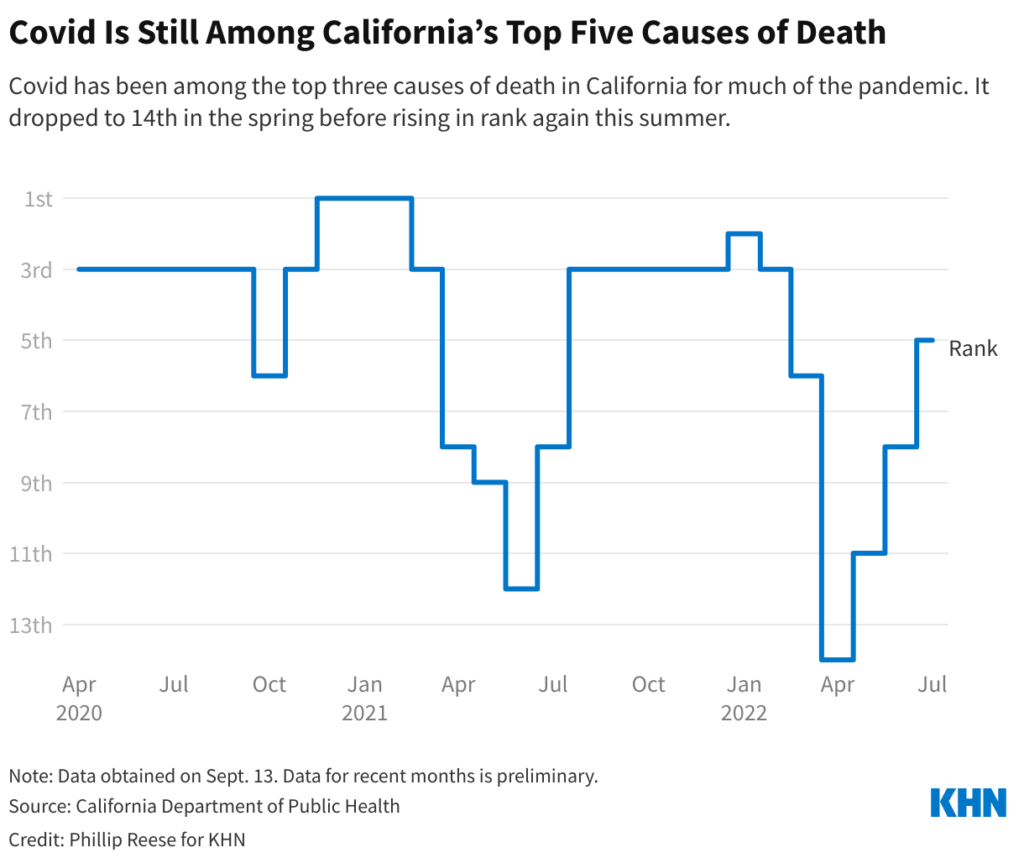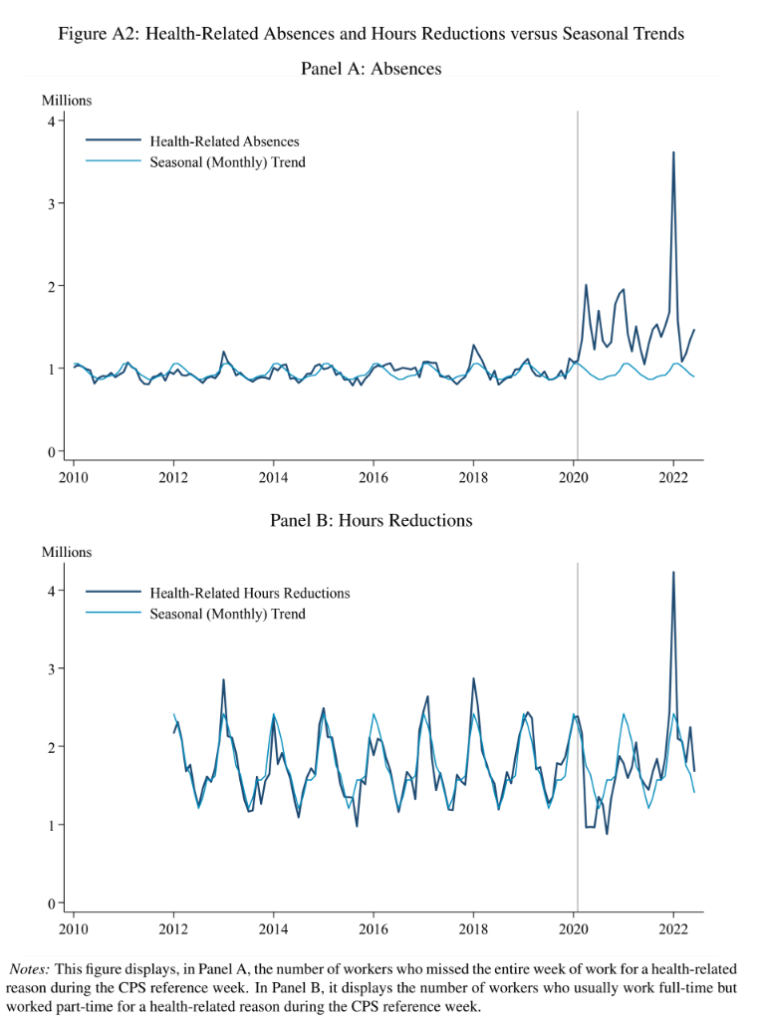Graphic:

Excerpt:
As of the week ending October 1, 2022, the United States has lost nearly 1.1 million lives to COVID-19, of which about 790,000 are people ages 65 and older. People 65 and older account for 16% of the total US population but 75% of all COVID deaths to date. Vaccinations, boosters, and treatments have led to a substantial decline in severe disease, hospitalizations, and deaths from COVID-19, but with booster uptake lagging, deaths for older adults rose again during the summer of 2022.
From April to July 2022, the number of deaths due to COVID increased for all ages but rose at a faster rate for older than younger adults and stayed high through August 2022, with deaths due to COVID topping 11,000 in both July and August among people 65 and older. While COVID deaths began to drop again in September, they were still higher for those ages 65 and older than in April or May; for those younger than 65, deaths dropped below their April levels.
The rise in deaths is primarily a function of increasing cases due to the more transmissible Omicron variant. Other factors include relatively low booster uptake, compared to primary vaccination, and waning vaccine immunity, underscoring the importance of staying up to date on vaccination. On September 1st, CDC recommended a new, updated booster for all those ages 12 and older, but particularly for those who are older.
Author(s): Meredith Freed Follow @meredith_freed on Twitter , Tricia Neuman Follow @tricia_neuman on Twitter , Jennifer Kates Follow @jenkatesdc on Twitter , and Juliette Cubanski Follow @jcubanski on Twitter
Publication Date: 6 Oct 2022
Publication Site: Kaiser Family Foundation









